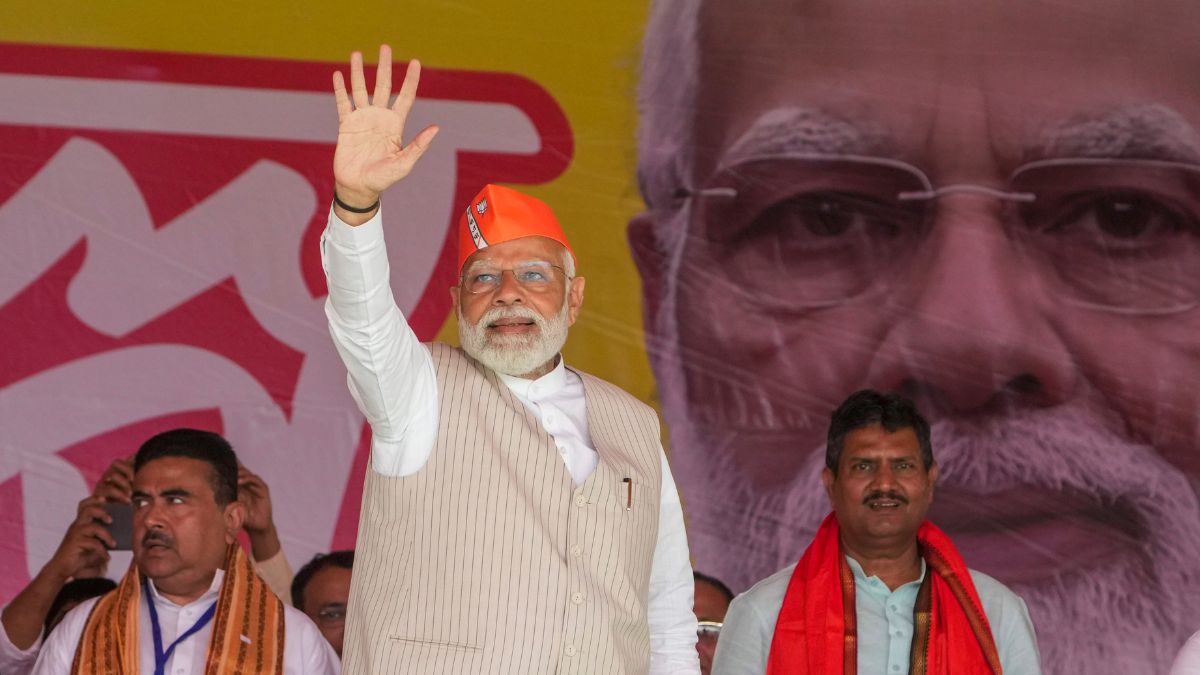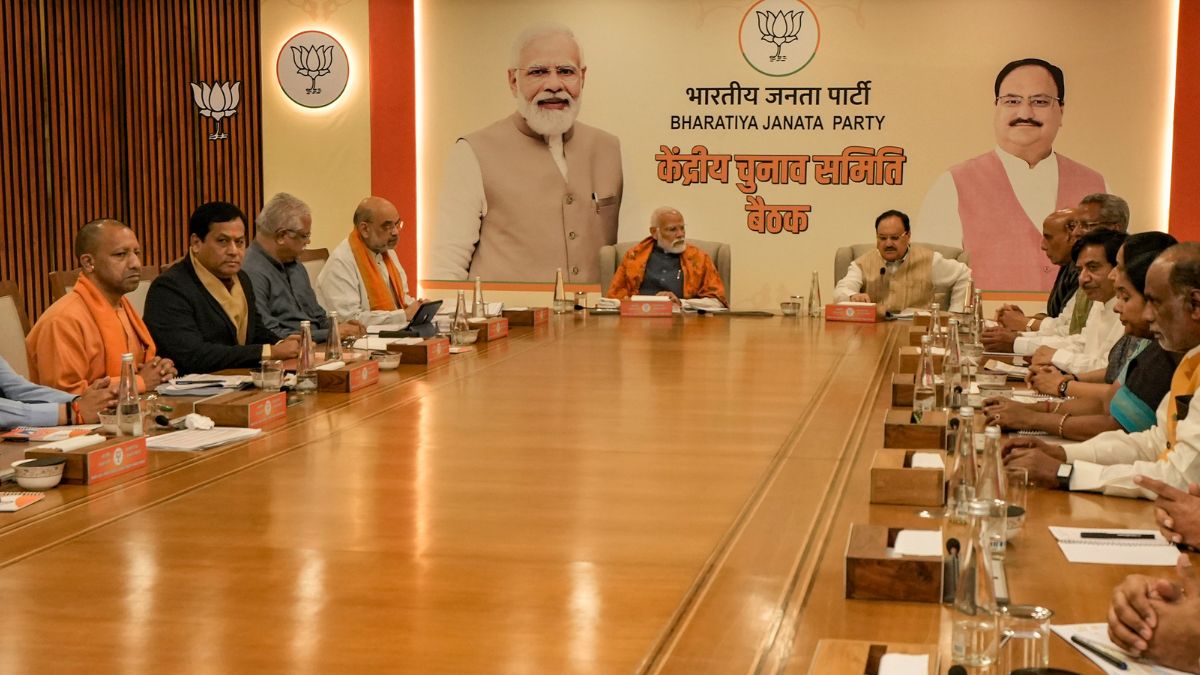Most of the critiques levelled at the current regime’s style of functioning draw intellectually from the Left’s notions of state power and liberal notions of authoritarianism – both of these are in the light of experiences with Right-wing authoritarian regimes. It would be interesting to look into the Right’s notions of and objections to authoritarianism and the misuse of state power – when the administration in place was one other than their own.
Since the idea of autocratic power is not an invention of the Right-wing, but comes from ancient notions of divine mandate and religious sanction to social hierarchy – the Right indeed had to learn from its encounters with and endeavours against an incumbent government.
Some of the insights are indeed startling. When one comes across RSS propaganda against Indira Gandhi’s rule, one begins to see the symptoms of a story that is all too familiar in the present context.
An editorial note in the RSS mouthpiece Organiser titled “A Fascist State?” published in the Deepawali issue of 1984 enlightens us on some interesting historical parallels:
“While close media watchers and political stargazers may wrangle over the question whether the Doordarshan is being used as Mrs. (Indira) Gandhi’s monopoly or Mrs. Gandhi is being used as Doordarshan’s monopoly to beautify the rather dreary TV screen umpteen times a day, there is no doubt that she is consciously emerging as the TV superstar.”
The accusation in the Organiser regarding subversion of public communications machinery for propaganda purposes reminds one of the pre-packaged Mann Ki Baat addresses. It is not simply that an address is broadcast by the public media – it is amplified by gushing coverage from the private media of a speech that involves more of what the Prime Minister wants to talk about, and less of the issues the country faces today.
One must also mention the huge expenditure involved in its promotion – in the form of newspaper and TV ads, billboards and more – often outweighing the social or infrastructural benefits. One would not be wrong to argue that the private media houses were never half as loyal to Indira Gandhi – a single look at the newspapers from the 1970s would be clarification enough, as would the tone of the Organiser excerpt itself – because Gandhi was prepared to be a threat to the interests of the biggest business houses when needed (the Goenkas owned The Indian Express, for example).
Developments in mass media were viewed suspiciously by the RSS:
“And Mr. HKL Bhagat’s crash programme to cover 70 percent of the Indian populace by installing 139 new transmitters in 120 days, is patently designed to facilitate that process (of making Gandhi a TV superstar). But as everybody knows, it is all for the purpose of an election windfall, apart from the incidental windfalls for party and private coffers.”
Regarding expansion of public communications infrastructure for political propaganda purposes, the Digital India campaign is of a similar breed – a hyped PR stunt which provides an infrastructure expansion partly through public money, for the profit of private groups, ultimately serving as a way for the government to use taxpaye- funded advertising to celebrate itself on your devices for taking your data using your taxpayer money.
The excerpt that follows is a depiction of how the public sphere is ultimately manipulated:
“The whole thing is admirably planned to project an Atlas-like image for the PM – a sort of demigoddess carrying the backbreaking burden of the problems of India on her slender shoulders or a Hercules fighting external and internal dragons and demons, including those of the opposition, with supernatural force and finesse.”
The misogynistic “slender shoulders” comment aside, the similarities are uncanny. PM Modi routinely upstages his ministers to grab the spotlight – for example, External Affairs Minister Sushma Swaraj’s tenure has been entirely overshadowed by the Prime Minister’s interventions. The Prime Minister has also spent more days abroad than she has, in their respective capacities. The common perception among the general public is that the current government is run by a small coterie and not through ministerial autonomy.
The deification of Prime Minister Modi is constantly underway – from Modi temples in Gujarat, to prematurely deterministic books on “Modinomics” published a couple of months before PM Modi even laid down a coherent economic policy. Apparently, the PM alone can tackle the crises India is facing today – whether the persistence of caste discrimination, or the skyrocketing inflation, or even the communal problem – whether or not he is interested in solving them in the first place.
The discourse of the 56-inch chest and the “Modi masks” are also rather telling. Like a petty dynastic regional party, the BJP is now claiming that each vote for any of its candidates since 2014 was a vote for PM Modi – as if each vote given to the NDA in 1999 was a personal vote for Atal Behari Vajpayee. The constant refrain is that the Prime Minister is making a colossal effort to protect and improve the country and that any iota of dissent would be unpatriotic. Indira Gandhi did not label her opponents “anti-national”, however much the latter used that very label against her.
The achievements and merits of the Make In India, Swachh Bharat, and Digital India initiatives have been grossly exaggerated – and form rather odd, empty successes to tout. Not a single election promise has been upheld. Indian business tycoons are still investing abroad, while FDI has opened up crucial sectors to the vulture multinational firms. Manual scavenging has not been eradicated, municipal garbage collection and forms of waste disposal have not been improved, renewable energy has not been promoted. Key economic issues such as employment, self-sufficiency and expansion welfare have not been adequately addressed. A short list of what the Prime Minster did not speak about in his Mann Ki Baat-ein would suffice to prove the point: Dadri, the Rohith Vemula suicide, the Jat agitation, the JNU controversy, the Patel agitation, caste atrocities, and the Vyapam scam.
The mapping of enemies is also at work. Kashmiri civilians (not to mention the 150 or so militants), “love jihadis”, inept Opposition MPs, central university students and the spectre of the Islamic State are the main shadows that the current regime wants be seen boxing with.
The Organiser essay then moves on to point out certain tendencies an authoritarian ruler exhibits when it comes to the organisational restructuring of the party or government:
“And the conscious combination of the two August offices of the Prime Minister and Congress (I) President in a single set of hands eminently suits the partisan propaganda ends of for which Mrs. Gandhi has become so famous. As if to complete the Trimurti, her heir presumptive Rajiv Gandhi has been anointed as the Secretary-General of the Party. That leaves little scope for any other face to pop up on the telescreen, especially when the dividing line between the Party and the Government disappeared long ago…”
The current administration takes the latter tenet one step further, blurring the line between RSS pracharakship and nominated heads of public institutions. Further, in the vein of the above excerpt, Modi’s right hand man Amit Shah was anointed as the BJP president over the heads of leaders far more senior in stature, to symbolise the Modi faction’s takeover of the party – the old guard completely sidelined. The monopoly of certain party leaders on TV automatically reduces the relative popularity of their colleagues at the national level. Some surrogates, such as Anupam Kher and MJ Akbar, are given more exposure than seasoned veterans of the Hindutva family.
The denunciation of authoritarianism from the Sangh is not only political; it is moral, and points to a conspiracy of the elites to collaborate with the State for the perpetuation of their dominance:
“While some may consider it nothing wrong for the top two ruling party bosses to use the captive media as they like as long as they are legally and constitutionally in power, the ominous trend of what Aldous Huxley called Big Government ruling with the help of Big Business and using the Big Media for brainwashing the vast populace, cannot be taken as a normal state of affairs.“
Observing the state collusion with big business houses like the Adani Group, the scripted TV interviews with the Prime Minister delivered on a silver platter by a media whose owners have every stake in the plutocracy, and favourable ratings by friendly think tanks funded by corporate donations – today is not a very different story. The Delhi police, the BJP/RSS’s student wing ABVP, the home ministry and an obedient set of news channels such as Zee TV, NewsX, and Times Now collaborated with an efficiency unprecedented, to paint the Jawaharlal Nehru University community as a set of terror-supporting anti-national traitors – often on the grounds of doctored videos. The private media, just like the public media was back in Indira Gandhi’s day, is now an extended arm of the government’s PR machinery when it comes to the “booming” economy or foreign relations. Teleprompter-d speeches abroad that are greeted with formal applause are termed historic by even the most sensible news outlets.
The key conclusion of the RSS article adds the repressive arms of the state to the hegemonic ones and characterises the final product:
“Add to it the two other props of the Government, the paramilitary and military forces and the makeup of a Fascist state is complete.”
There are many who would eagerly agree to this very characterisation being applied to the powers-that-be today – if only the original complainants were not so uncomfortable with their initial objections or diagnosis. Ultimately, all these tendencies, according to the RSS, amounted to a fascist state. It becomes clear to the reader that the Sangh learned much from the Indira era (and from Sanjay Gandhi as well) about State repression and government propaganda – and incorporated it into its playbook. During the Emergency when the organisation was banned, then-RSS supremo Balasaheb Deoras sent flattering letters to Indira Gandhi professing the RSS’ loyalty to the Congress regime and claiming no role in the JP movement whatsoever – in a parallel to Savarkar’s letters pledging allegiance to the British government when he was jailed.
Following the first elections after the Emergency, the erstwhile Jan Sangh segment of the Janata Party demanded the Information and Broadcasting Ministry as its first line of entry into state institutions under the central government, which was promptly granted to LK Advani. By the late 1980s, communalised versions of the two epics were being broadcast on Doordarshan, complementing the rabble rousing audio cassettes of saffron firebrands such as Sadhvi Rithambara that once more communalised the Hindi belt in the run-up to the Ram Janmabhoomi movement. The disinvestment drive under the 1999-2004 Vajpayee government that involved the handing over of several profitable public sector undertakings to big players in the private sector, effectively handing them short-term monopolies, was followed by the “India Shining” slogan that betrayed the BJP/Sangh agenda of a state for the elites, by the elites. The BJP’s first experiment with independently wielding the arms of state propaganda was a failure – and the pressures of being part of a coalition didn’t help either.
Now that the BJP has come into a parliamentary majority on its own, and in light of the above quoted words of wisdom from the nation’s premier moral think tank, one realises that the sort of authoritarianism that was once deemed unacceptable in the past when the Right was not in power, became the blueprint for a regime tightly controlled under the garb of manufactured “efficiency” by those who once railed against it.


)




)
)
)
)
)
)
)
)